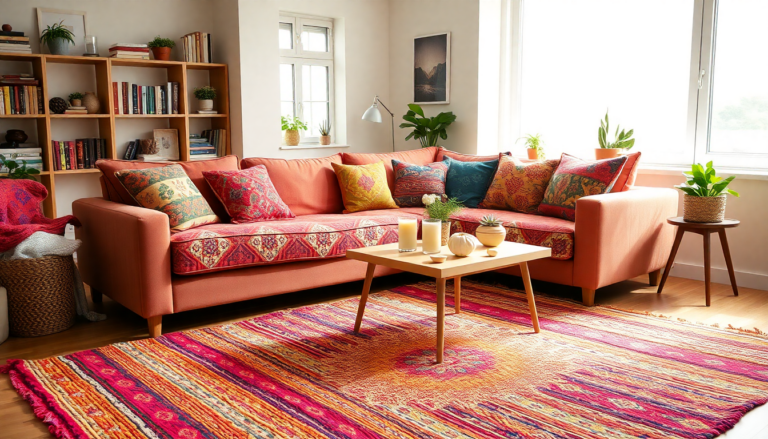Argomenti trattati
In a world that champions individuality and self-expression, customizing furniture—especially those ubiquitous pieces from Ikea—has become a standout trend. Isn’t it fascinating how this phenomenon reflects our quest for authenticity in our homes? After all, our living spaces are not just about functionality; they’re also a canvas for our unique tastes and lifestyles. Let’s dive into why customizing Ikea furniture has captured our hearts, what it means for our living environments, and how it connects to a broader cultural narrative.
The Rise of Ikea Hacks: A Cultural Phenomenon
Over the past decade, we’ve witnessed an explosion of ‘Ikea hacks’—a term that describes clever modifications made to Ikea products. Have you ever stumbled upon a creative transformation of a standard, mass-produced item into something truly bespoke? As a former Google Ads specialist, I’ve seen this trend thrive on platforms like Pinterest and Instagram, where users showcase their imaginative designs. The beauty of Ikea furniture lies in its accessibility and the endless possibilities for customization, making it a popular choice for those looking to enhance their spaces without breaking the bank.
The data paints an interesting picture: the customization market is on the rise, with DIY enthusiasts flocking to social media to share their projects. But this trend goes beyond aesthetics; it signals a shift in consumer behavior. People are increasingly eager to create environments that reflect their personal identities. From my experience, understanding these behaviors is crucial for marketers who want to engage consumers on a deeper level.
Analyzing the Motivations Behind Customization
So, what’s fueling the desire to customize Ikea furniture? The motivations are as varied as the designs themselves. For many, customization is a powerful form of self-expression—a way to set their space apart from the rest. With Ikea’s furniture being so prevalent, it’s no surprise that there’s a collective yearning for individuality.
But it’s not just about standing out; functionality plays a key role, too. Imagine transforming a simple Ikea wardrobe into a chic walk-in closet or adding a unique finish to a coffee table. These enhancements can significantly elevate both utility and aesthetic appeal. In today’s fast-paced world, adapting furniture to better fit our lifestyles is more important than ever.
Case Study: Transforming the Ordinary into the Extraordinary
Let’s take a closer look at a case study that perfectly illustrates the power of customization. Picture a family that bought a basic Ikea sofa. Over time, they decided to revitalize it by reupholstering it in a vibrant fabric and adding custom cushions. This simple act not only refreshed the piece but also aligned it more closely with their family’s personality and style. Can you imagine how that sofa became the centerpiece of their living room, sparking conversations and evoking fond memories?
The metrics of success here extend beyond just visual appeal. By reupholstering their sofa, the family preserved a functional piece of furniture while also curating an emotionally resonant environment. This aligns with my belief that every marketing strategy should be measurable; in this case, we can quantify the emotional ROI that arises from crafting a personalized space.
Practical Implementation: Tips for Customizing Your Ikea Furniture
Feeling inspired to customize your Ikea furniture? Here are some practical tips to kickstart your project:
- Research and plan: Before diving into a project, gather ideas and inspiration from online platforms. What changes do you envision making, and how will they enhance the piece’s functionality or aesthetic?
- Choose quality materials: Investing in high-quality fabrics, paints, and hardware can significantly elevate the final outcome. The right materials not only enhance durability but also amplify the overall look.
- Utilize online communities: Engage with online forums and communities dedicated to Ikea hacks. These platforms are treasure troves of valuable insights, tips, and support from fellow DIY enthusiasts.
By implementing these strategies, you’ll be well on your way to transforming your Ikea furniture into personalized pieces that reflect your unique style.
Key Performance Indicators for Measuring Success
As you embark on your customization journey, establishing key performance indicators (KPIs) is essential for evaluating your projects’ success. Consider these:
- Functionality: Does the customized piece meet your practical needs? Is it easier to use or more efficient?
- Aesthetic appeal: Does the furniture now resonate with your personal style and the overall theme of your space?
- Emotional connection: Does the piece evoke positive feelings or memories? How does it enhance your daily life?
By monitoring these KPIs, you can ensure your customization efforts align with your personal goals and contribute positively to your living space.
In conclusion, customizing Ikea furniture is about more than just altering physical objects; it’s about creating environments that reflect who we are and how we choose to live. As we continue to explore this trend, let’s not forget the importance of authenticity. Whether you opt for a simple modification or a complete transformation, the ultimate goal should be to create a space that brings you joy and resonates with your identity.

